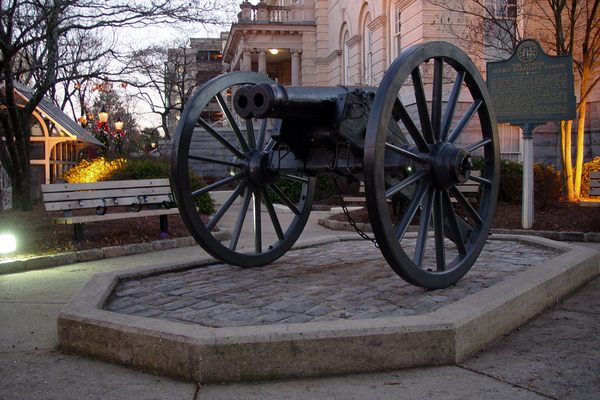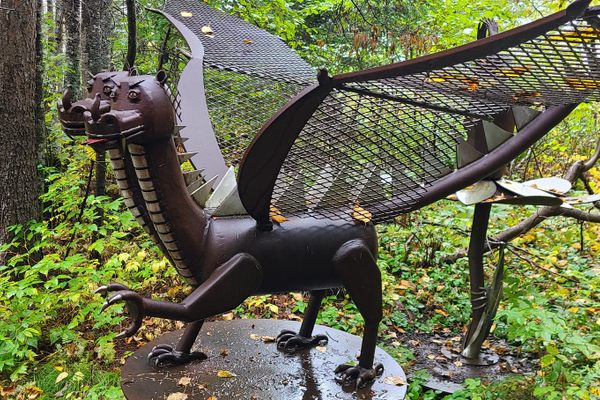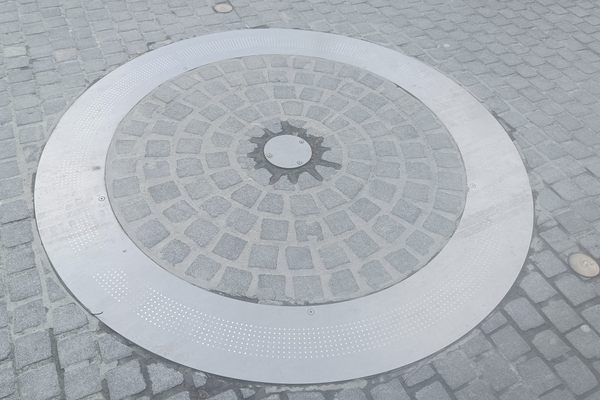9/11 Memorial Trail
Though it is far from the site of the attacks on September 11, 2001, this memorial trail commemorates the lives that were lost on that day.
There are more than 1,000 memorials across the United States that serve as reminders of the terrorist attacks of September 11, 2001, and to honor the victims. Though it is many miles from the sites of the attacks on that tragic day, the 9/11 Memorial Trail in Athens, Georgia, is filled with meaning.
After a trip to New York City just one month after the attacks, artist Bob Hart—who had been moved by the hushed reverence of the other passengers on his flight, then the flowers and missing posters on the chain link fences—decided that he had to do something to help others remember those whose lives had been lost. The final result of his work is a 300-yard wooded trail on his property that has been visited by people from across the country for more than 20 years.
Upon entering the trail, visitors will first see a mailbox that contains a notebook for signing in and leaving comments, then a sign that describes the main purpose behind the trail. It bears a quote from Holocaust survivor Elie Wiesel: “Memory may be our most powerful weapon against fanaticism.”
Along the trail are 99 posts—symbolizing September as the ninth month of the year multiplied by the eleventh day of the month. Every victim of 9/11 has their name somewhere along the trail, painted on cedar shingles that are attached to the posts (visitors who want to find a specific name can find the names and numbered posts in the notebook). Posts are topped with painted American flags which are turned to face northeast, toward New York. Continuing the symbolism, there are nine benches along the trail so visitors can rest and contemplate. Posted among the names along the trail are paintings created by local artists.
There are three sculptures along the trail, each symbolizing one of the three crash sites. The path to the Pentagon Memorial Sculpture is lined with 254 stones to represent the 254th day of the year. The sculpture itself is composed of five black beams, representing the five sides of the Pentagon, with one broken to represent where the plane crashed. The missing piece is painted red to represent the fire at the crash, and is laid atop 184 black rocks—black to represent the strength of the military and Americans, the number to represent how many people lost their lives at that site.
The path to the World Trade Center Sculpture is lined with 62 rocks to represent the number of nations represented among victims. The sculpture consists of nine granite posts arranged to evoke the skyline of New York City. Gray stones are placed around the posts to represent the debris and grit from the buildings’ collapse; two darker stones represent the Twin Towers.
The Flight 93 Memorial Sculpture also contains nine poles and 254 stones, this time in a crater to portray the crash site. Forty white stones represent the 40 victims.
After more than 20 years, some of the artwork and painted names show the signs of time. If you visit in the fall or winter, leaf fall does obscure some of the rocks. Even so, the memorial is a unique and peaceful reminder of the deadliest terrorist attack in history.
Know Before You Go
The trail is open to the public, but is in a neighborhood, so visitors are asked to be considerate of neighbors.


















Follow us on Twitter to get the latest on the world's hidden wonders.
Like us on Facebook to get the latest on the world's hidden wonders.
Follow us on Twitter Like us on Facebook